George Edward “Edd” Gibson has spent more than a decade elevating the School of Sustainable Engineering and the Built Environment through his various leadership roles
He spent almost a decade at the helm of the School of Sustainable Engineering and the Built Environment at Arizona State University, serving as a champion of civil, environmental and sustainable engineering degree programs as well as construction management and construction engineering degree programs.
Now George Edward “Edd” Gibson Jr. says it’s time to explore life outside of academia. 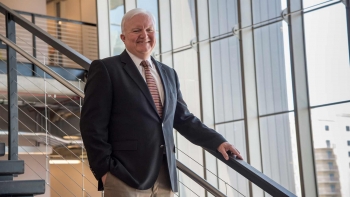 George Edward "Edd" Gibson is preparing to retire from ASU after leading the School of Sustainable Engineering and the Built Environment for more than a decade after its founding. Download Full Image
George Edward "Edd" Gibson is preparing to retire from ASU after leading the School of Sustainable Engineering and the Built Environment for more than a decade after its founding. Download Full Image
“After 34 years teaching, researching and providing services at the university level, I just felt it was time to move on to other challenges,” he says.
Gibson, a professor and the Sunstate Chair of Construction Management and Engineering, joined ASU in 2009 as the program chair for the Del E. Webb School of Construction. Just a year later, he followed founding director Paul Westerhoff to become the interim director and later director of the School of Sustainable Engineering and the Built Environment, holding the position until 2018.
“Edd served as the director in its critical formative years,” says Ram Pendyala, the current director of the School of Sustainable Engineering and the Built Environment. “He provided outstanding leadership in bringing two formerly separate units together under the auspices of a single interdisciplinary school, recruited an outstanding cadre of faculty and presided over a period of significant growth and prosperity.”
Pendyala says Gibson put the school on a path to success, particularly by dedicating himself to building College Avenue Commons, the hub of the school that will serve as its signature collaborative learning space for many years to come.
“The legacy that he has built will stand the test of time and serve as a beacon of hope and inspiration for many who seek to follow in his footsteps,” Pendyala says.
Keep reading to learn more about Gibson’s impact on the engineering community in his own words — both at ASU and beyond.
Education
Question: Where did you get your start in construction management and construction engineering?
Answer: I started working construction in high school and continued that during the summers in college. I operated heavy equipment and eventually served as a foreman on a bridge-building crew. My university degree was focused on civil engineering as there weren’t many construction programs around back then. However, I got to work in construction from day one as I commissioned as a lieutenant in the U.S. Army Corps of Engineers the same day I graduated from Auburn University. I enjoyed getting to build roads, bridges, maintenance facilities, housing and airfields. I wanted to be involved in that work for the rest of my career.
Q: What led you to pursue teaching?
A: When I exited the Army, there were not a lot of jobs for civil engineers, as the economy was in a downturn. So I went to work in manufacturing at Texas Instruments. I was asked to teach classes in statistical process control and total quality management to employees. In the end, I liked teaching, left manufacturing and returned to school to get a PhD in civil engineering with a focus on construction so that I could teach and get back into the area I enjoyed more.
Q: You have had the opportunity to work with thousands of students during your time as a professor. What has been the best part of that experience?
A: Being on the podium and interacting with the students in and outside the classroom was the best part. I appreciated working with young students who were open to learning. I also enjoyed helping students work through challenging situations to be able to achieve their goals and dreams. The worst part was grading papers and tests.
Research
Q: What has your area of focus in the construction industry been all these years? Has it changed as the industry evolved?
A: I started out in computer technology and wrote one of the first journal papers on what is now known in the construction industry as building information modeling. As my career advanced, I have evolved my research focus to be at the leading edge of what is important to industry. It’s a process that requires talking to practitioners and finding out what is important to them. As a result, I focused heavily on early project planning, safety systems and culture, alternative project delivery, alternative dispute resolution and advanced project controls. I feel fortunate to have attracted almost $11.5 million in funded studies over the past 30 years (not inflation adjusted). I am most proud of the fact that my work has been adopted by practitioners in the engineering and construction industry around the globe, and I have been fortunate to have interfaced with project teams who were using my work on all seven continents.
Q: What do you see for the future of this research/work?
A: I think the future of my work is evolutionary. Hopefully, I have laid the foundation for the next generation of researchers who have the same use-inspired focus that I have. They need to listen to industry to find out what is needed and continue to help our industry become safer and more efficient.
Building the school
Q: What was it like to be a director of the school at its start? What did the school look and feel like?
A: It was challenging. We were trying to combine complementary programs and staff who had not worked together before. The dean and president were supportive of the direction that I wanted to focus on. It took a lot of work to align people, programs and attitudes so that we were moving forward. I was fortunate to be able to hire around 40 faculty members, which helped change the culture and push forward the momentum of the new school. I took mentoring young faculty very seriously because they were the future of the school. Our alumni and corporate partners were very supportive, and I raised more than $23 million in philanthropic gifts that allowed us the extra funds to do great things.
Q: A big highlight in the growth of the school is the building of College Avenue Commons and the input current and former construction students had on the project. What was the process of getting it off the ground and what was the end result of seeing it finished?
A: Exhausting! From the time I arrived on campus in August 2009 to when the building opened in July 2014, there was not one day that I did not do something to move the project forward. The alumni were passionate about the project, and we had 82 donors who wanted to know how things were going. The downturn in the economy had put the project on hold, but I kept pushing for it, raising money, getting donors to recommit and looking for options.
We solicited student input during planning and design, and our students were working as interns on the project. It’s probably safe to say every student in the program during that time toured the project multiple times. In addition, the on-site project team members were all Del E. Webb School of Construction graduates, and many of the designers were ASU graduates as well. The project was a labor of love and won seven regional and national project awards. It still holds up well, and our foresight in developing flexibility in the spaces became a model for ASU projects afterward.
Read more: College Avenue Commons — A monument to innovation and construction
Q: Who are some leaders at ASU or beyond that have aided in your career from the time you were the school’s director until now?
A: I think first and foremost was Paul Johnson, the dean of the Ira A. Fulton Schools of Engineering during a big portion of my time as director. He listened to my ideas and in many cases provided the resources and management support for our school to make rapid advances. He was great to work with and very supportive of starting three new academic programs — sustainable engineering, construction engineering and environmental engineering — during my tenure.
Another person at ASU who I enjoyed working with was Mike Remedi. He was a terrific fundraiser who kept me on track and was critical in our move to excellence.
I also worked with a number of our industry supporters in the greater Phoenix area to help keep us moving forward. The person who was most helpful outside of ASU was Wink Ames, who was an executive at Minard-Ames. He was awesome to work with, knew everyone and was honest with what he thought of my ideas and our direction.
Collaboration
Q: What does collaboration mean to you looking back at your time here at ASU?
A: Collaboration was absolutely key. It meant bringing people face to face around an open table on a regular basis. I worked with so many staff members, faculty, alums and students, and nothing we accomplished could have been done without all of their work and dedication. I would like to give a strong shoutout to staff members Alicia Stiers, Judy Reedy, Susan Garrison and Mike Sever, who were there the entire time I was director. They were outstanding and always made me look good.
Q: Are there any special organizations that stand out in supporting your career?
A: I have been fortunate to have a long association with the American Society of Civil Engineers, the Construction Industry Institute, the National Academy of Construction, the National Academies of Science, Engineering and Medicine and the U.S. Department of Energy. Each has had a huge influence on the trajectory of my career.
Read more: Gibson’s legacy of construction earns Distinguished Member honor
Read more: Gibson appointed to Board on Infrastructure and the Constructed Environment
Looking to the future
Q: What is next for you?
A: Well, my retirement from academia is at the end of the year. It will be brief, as I take over as president and CEO of the National Academy of Construction starting Jan. 1, 2023. Being at the helm of a nonprofit and helping it grow, mature and do great things will be an exciting challenge.
Q: Any parting words that you want to share?
A: The school is much better when everyone is working together in a complementary manner. Having civil engineering, construction management, construction engineering, sustainable engineering and environmental engineering under the same umbrella happens nowhere else on the planet. If done right, this structure provides opportunities for economy of scale and collaborations that other places only dream about. I wish the school the best of luck in the future, and I thank everyone who supported me and our journey over the past 13 years.


Neuralink, a startup co-founded by Elon Musk, is developing technology to improve the connection between humans and computers through implanted chips in the brain.
The technology is purported to be able to restore a person's vision or assist people with mobility issues.
Last week, Musk announced that the startup will begin human trials in six months.
The idea of brain chips is not new. Researchers in this rapidly growing field have been developing devices that can decode brain signals for decades.
But what is new, is that by testing these wireless chips on humans, Neuralink is putting the possibilities of this life-changing technology within reach by June 2023.
Musk, the SpaceX founder, Tesla Inc. CEO and Twitter Inc. owner, explained that the brain chips' interface could help severely disabled patients to move and communicate, and even restore vision by decoding brain activity.
Eventually, these chips would be mass produced and may be used for non-medical purposes like leveling the intellectual playing field. According to Musk, Neuralink has submitted most of the necessary paperwork to the U.S. Food and Drug Administration.
But are his plans plausible? ASU News spoke with Bradley Greger to find out. Greger is a neuroscientist, a neural engineer and an associate professor at Arizona State University’s School of Biological and Health Systems Engineering.
Question: What do you think about Musk’s plans to restore sight to the blind?
Answer: He’s really taking the field to an entirely different level — to the place where technology can really give useful vision to a human being. And that is a pretty monumental undertaking.
Q: Musk claimed that even if someone was born blind, he can restore their vision. Is that really possible?
A: Being concerned over providing accurate information to people who may benefit from a particular medical technology is very important. Clearly differentiating between what can currently be done and what may be possible in the future is critical.
Restoring limited vision and movement has already been accomplished in small numbers of patients through similar approaches.
The goals elucidated by the Neuralink team are achievable in the next few years. However, this is largely dependent on the level of resources allocated and the requirements imposed by regulatory agencies.
Q: Explain your work in this area? How will Neuralink build on that?
A: Right now, I am specifically working on restoring vision by directly stimulating the visual cortex of the brain — the part of the brain that processes early vision.
Let’s say someone has lost their eyes — they're blind for whatever reason. Researchers and clinicians can go straight to the visual processing parts of the brain and stimulate tiny parts of that brain and the patient will see little flashes of light. That's been done — that’s what I have done and it’s been done many, many times. But really developing it into an actual device that could be medically applied ... that is very different.
I think the most interesting and perhaps more challenging part is getting information into the brain. This was the first time Musk showed data on that and went into more detail. But for that to be useful to somebody, there has to be enough information there that it improves their quality of life. For example, the person using it can recognize somebody coming up the street or they can navigate around their house. That's what Neuralink is doing.
(Musk is) very aware of the fact that it’s all about how much information we get in and out of the brain. You'll hear him say we need more bandwidth — he's absolutely right there. He's developing the technology to get that level of information to somebody who is blind. That is when it really truly becomes useful.
Q: What do you mean by information?
A: In the case of vision, information would come from an image that could be used to guide behavior or decisions. For example, if the image produced by the Neuralink device allowed people to recognize a doorway and door handle then they could move toward it and open the door.
This is like older low-definition versus new high-definition screens. On a low-definition screen with fewer pixels, you could see that a person is present, but it would be harder to recognize that person. On a high-definition screen with many more pixels, you can see more detail and easily recognize the person. The thousands of microelectrodes in the Neuralink device should allow for thousands of flashes of light — that is, pixels — which can be used to construct an informative image.
Q: How big is the implant and where would it be placed in the brain?
A: It's really teeny, tiny, and this is where what Neuralink has done is astounding. The actual electrodes that go into the brain are smaller than a human hair — they're microscopic, and that's what really has been a great technological advance. The electronics they have made are just amazing.
The device would be implanted in the vision part of the brain; the visual presentation part of the brain is laid out in a spatial way with certain parts of it mapped out very well. We understand that from a neuroscience point of view, that if you stimulate this part of the brain, they'll see something here at this point in space and then you can use that to build an algorithm so that you can literally hook the patient to a video camera and map it from the video camera to the brain and the person will see a kind of pattern of light.
That's greatly simplified. But that's basically the idea.
Q: Can you explain the connection between a location in life and a location in the brain?
A: The anatomy of the visual processing part of the brain is laid out like a map. A specific location in space maps onto a specific anatomical location of the brain.
For example, my coffee cup is at a specific location on the right side of my desk. This results in a specific part of my brain, the “right side of the desk” part, being activated so that I can see the cup of coffee. The Neuralink device utilizes this mapping to guide what part of the brain is stimulated so that a person with blindness will see a coffee cup at the proper location in space when the right parts of the brain are stimulated.
Q: What Musk is proposing is not exactly new — what makes his plans different?
A: There is a long history of brain computer interfaces, and the work at Neuralink is repeating and building upon this previous work.
The earliest research on using this type of technology to restore vision dates to the 1960s. Neuralink is advancing the technology to get it out of laboratories and be more widely available for clinical applications. That takes tremendous resources and a lot of very smart and dedicated people to achieve.
Q: When will this technology be available?
A: Musk is talking about almost restoring natural vision as we understand it. I think that is very far in the future. Again, it is theoretically possible, but I don't think that's going to happen in my lifetime.
But for it to be beneficial to somebody, they don't have to have fully complete natural vision, but rather something that just helps them work — do their job, go to the supermarket. That would be huge, and that is possible. And I think we will see that relatively soon.
Top photo courtesy iStock
"lasting" - Google News
December 09, 2022 at 01:13AM
https://ift.tt/Qilw5h1
Building a lasting legacy | ASU News - ASU News Now
"lasting" - Google News
https://ift.tt/NP7pcyt
Shoes Man Tutorial
Pos News Update
Meme Update
Korean Entertainment News
Japan News Update
Bagikan Berita Ini
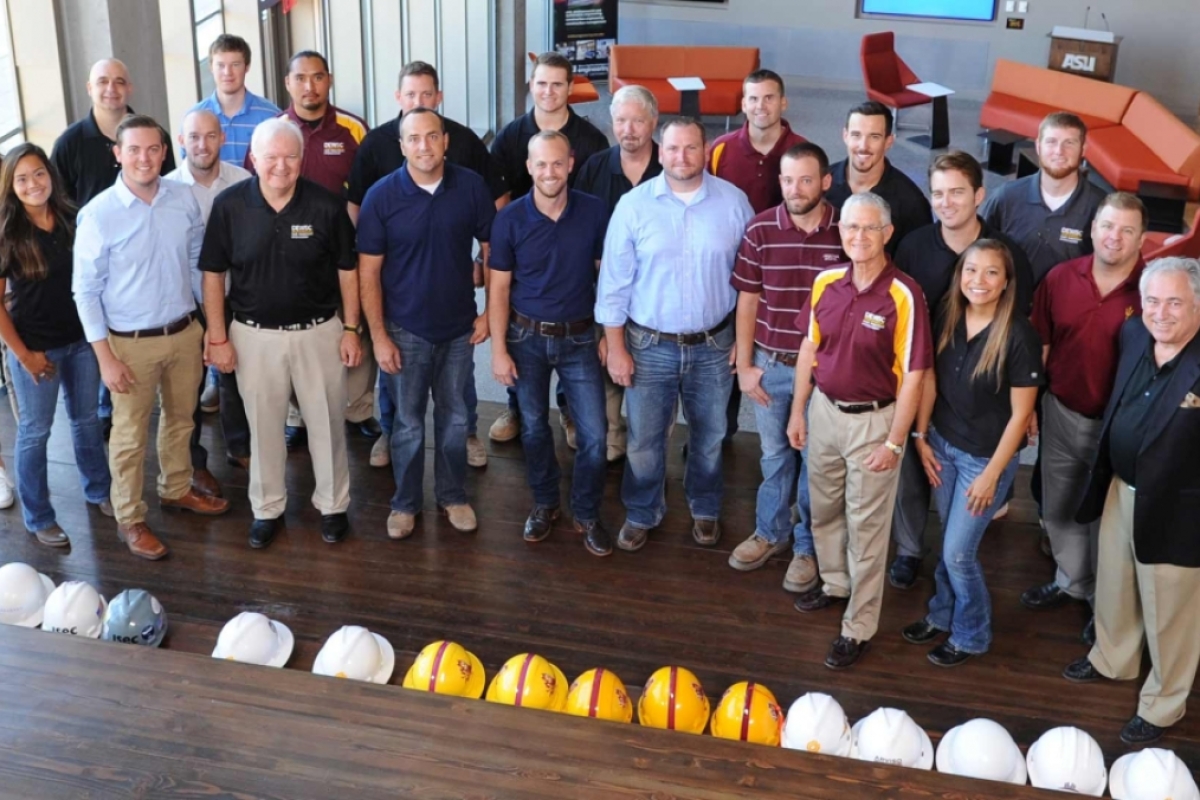
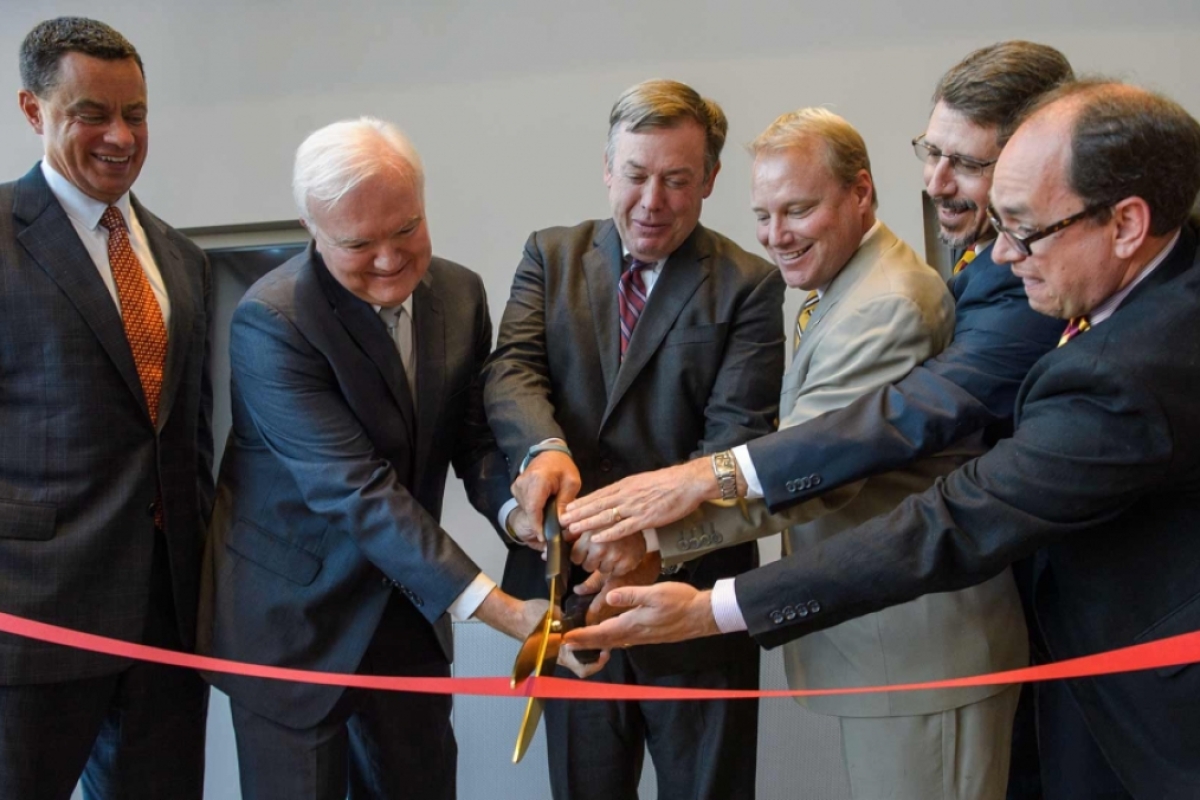
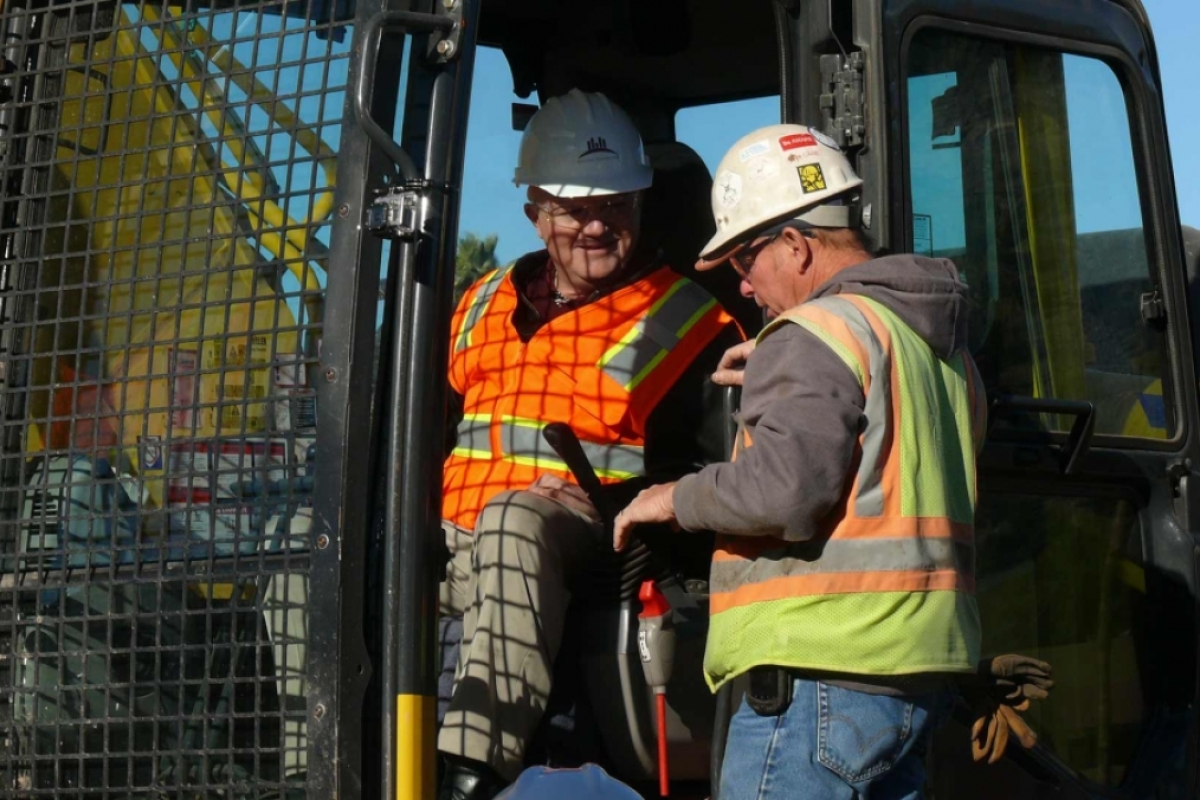
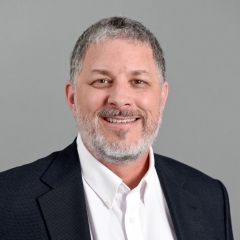














0 Response to "Building a lasting legacy | ASU News - ASU News Now"
Post a Comment